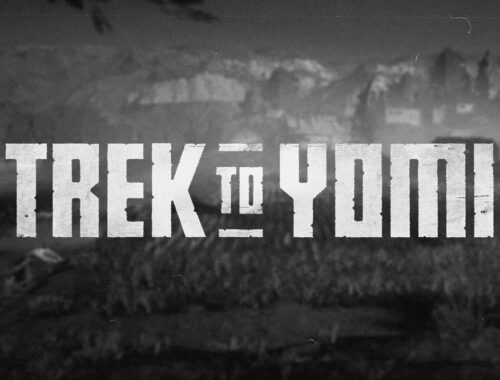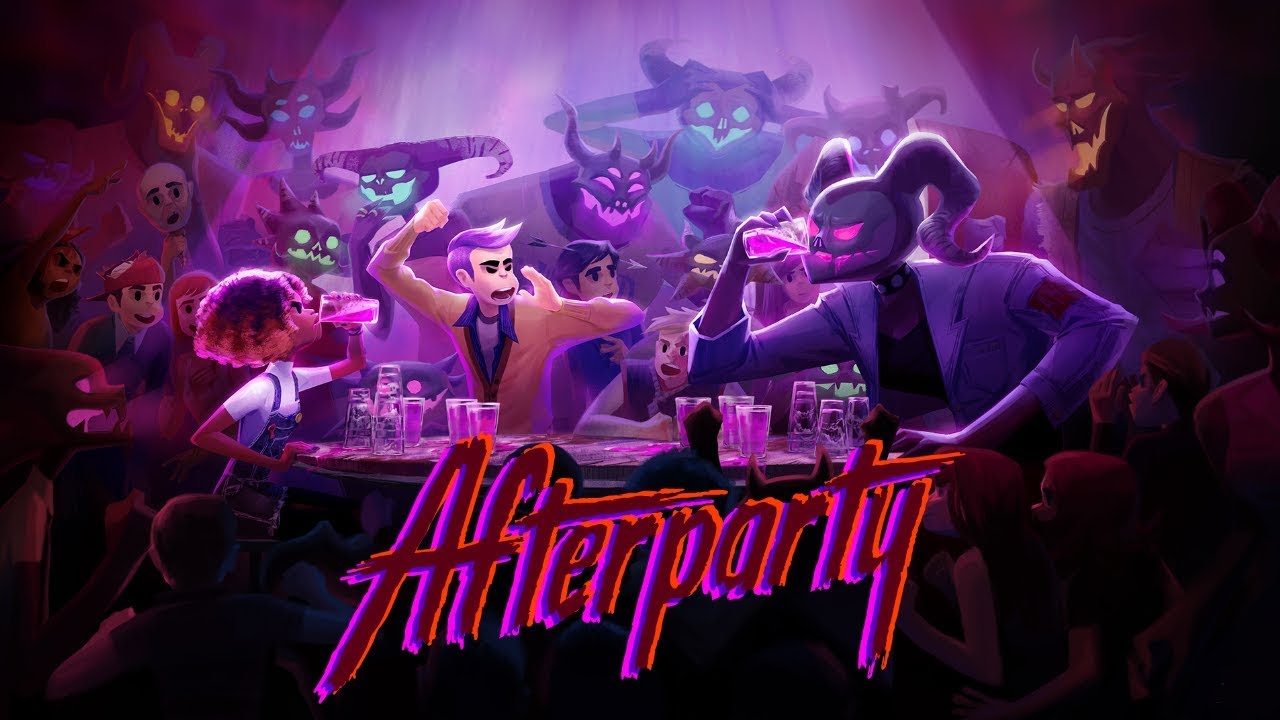Nioh 2 – The Complete Edition Review
Fast Facts
Nioh 2 – The Complete Edition
Developer: KOEI TECMO GAMES CO., LTD.
Publisher: KOEI TECMO GAMES CO., LTD.
Website: https://teamninja-studio.com/nioh2/
Genre(s): Action, RPG, Masocore, Soulslike
Platform: PC – Steam (also available on PS4 and PS5)
Age Rating: PEGI 18
Release Date: 05/02/2021
Price: £49.99
A code was provided for review purposes
A Blind Date
Nioh 2 arrived on PlayStation 4 in March 2020 and on Playstation 5 and PC, titled Nioh 2 – The Complete Edition, in February this year. The PC and PlayStation 5 versions include DLC packs released for the original PlayStation 4 version. Its events take place both before and after those in the original Nioh game, released on PlayStation 4 and PC in 2017. I let my passion for Japanese culture guide me in picking up this game to review. I have not played Nioh and therefore had no insight into backstory or game mechanics before beginning my playthrough. Was this a blessing in disguise? Or did this turn into a nightmare? Read my Rapid Review below to find out.
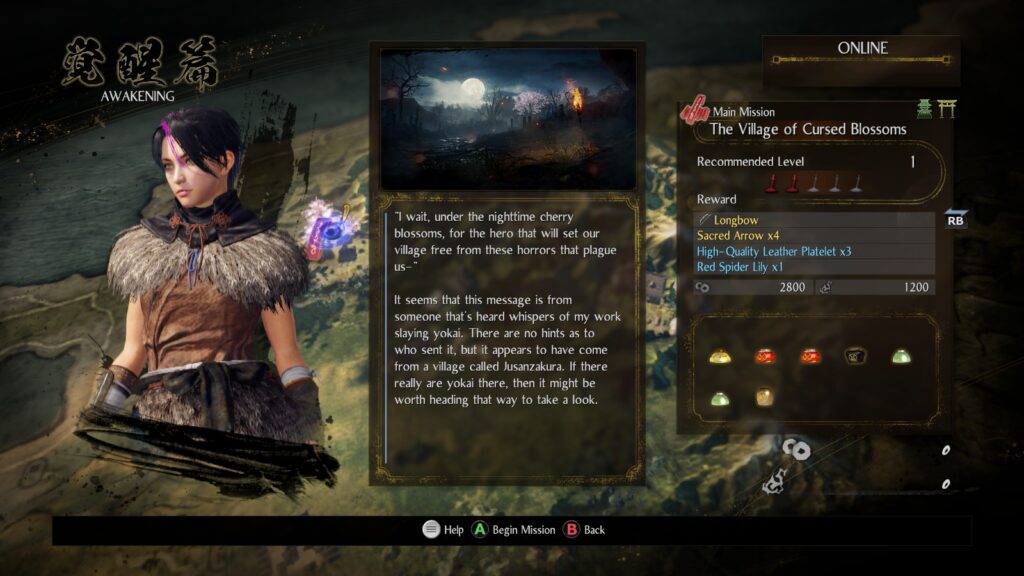
A Plot Based on the Past
Set in Feudal Japan, the story in Nioh 2 – The Complete Edition combines a wonderful blend of real historical events and mythical fiction. Characters have the names of real key Japanese historical figures from the time period (for the main game, the late 1500s to early 1600s). The game lore and Yokai character list are dripping with Japanese mythology. Coupled with this are fascinating facts about Japanese history and mythology littered on loading screens. It’s a veritable feast for history and culture lovers.
Building a Masterpiece
As a younger gamer, I stuck rigidly to only a few gaming genres. They were the only ones I liked, or so I thought. My primary gaming console has been an Xbox for over a decade, so with Game Pass at my fingertips I’ve learned to be more adventurous. That being said, Nioh2 – The Complete Edition still managed to take me outside of my genre comfort zone. I’m not one to have patience with overly complicated or fiddly game mechanics. Yet this is a title full of intricacy, planning and upgrading… and you know what? I loved it.
I have to commend the team at KOEI TECMO GAMES for how they introduced each layer of complexity. You begin your playthrough with a few things to keep your eyes on. At intervals throughout the game, new abilities or areas become available to your character. I appreciated the time between these changes taking place as it allowed me to at least get a basic grasp on the things already within my control. It certainly prevented me from becoming overwhelmed with information in an already wonderfully complex game.
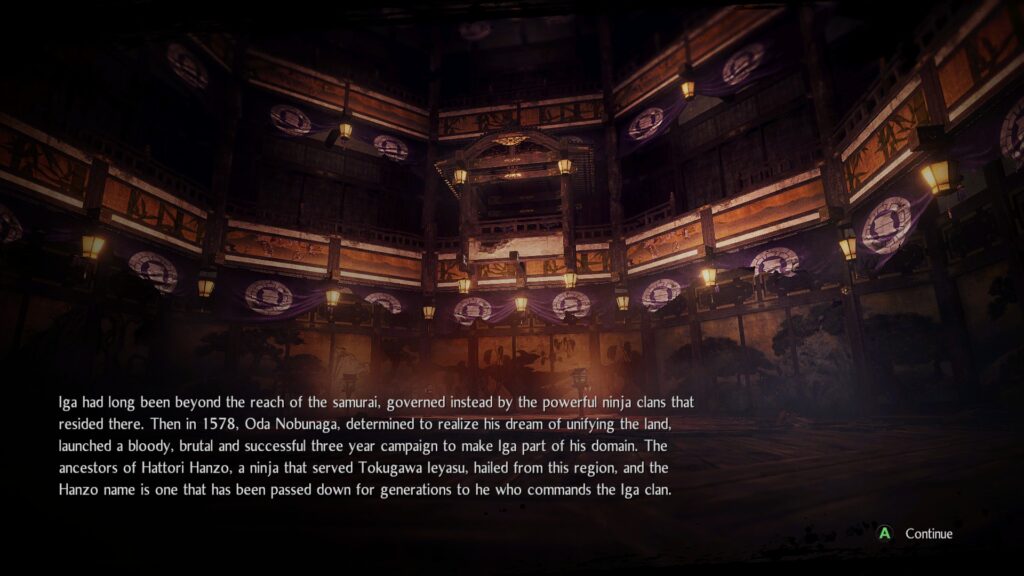
A Vertical Learning Curve
After the introduction cutscene, you have the option to customise the main character. Thus, the screenshots in this review show how I customised my character – yours could turn out very different indeed. You can choose between a male or female character and edit a wide range of their features. As a Nioh novice, I found the introduction helpful in providing some backstory.
Once I had finished creating my protagonist, I set off… and almost immediately came to a stop. Having recently played Hellblade: Senua’s Sacrifice when I began Nioh 2 – The Complete Edition, I initially mistook the game’s style of play as a simple hack and slash. However, there is far more to this title than first meets the eye. As the tutorials in the dojo help you to understand, fighting enemies is an activity best undertaken with a little forethought and strategy in mind.
Once I had got to grips with the combat mechanics, I have to say that I’m glad that they weren’t as simple as I’d first thought. In a game as enormous as this, there needs to be variety in multiple aspects of gameplay to maintain engagement. Nioh 2 – The Complete Edition achieves this, particularly in regard to how you must vary your approach to tackling different enemy types. Great fun for strategists.
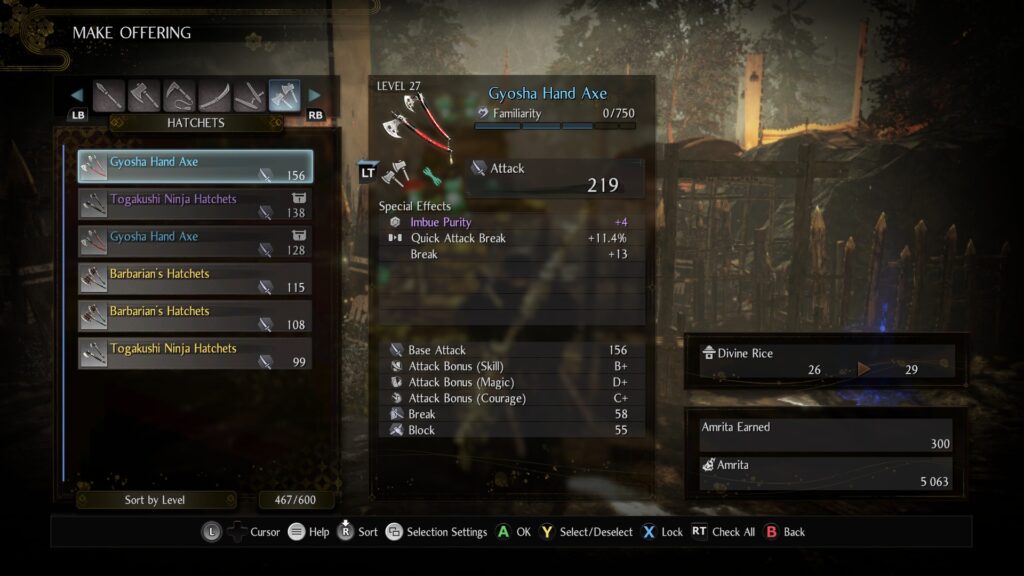
Missions
The protagonist (your character) is a sword-wielding part-human, part-yokai being. Throughout the story, you fight humans and Yokai (Japanese mythical demon-like creatures). From a map screen, you select which missions to complete and, once unlocked, from here you can access features such as (but not limited to) the Forge and the Hidden Team Rooms – more detail about these aspects later.
Nioh 2 – The Complete Edition has twenty-one core missions to the story, these usually end in (at least one) boss fight. In addition, there are sub-missions to complete to earn rewards. These missions do not continue the main story but rather happen alongside it. Often set in areas from previous main missions, they take a few different forms: a mini main mission with a medium Yokai boss fight at the end; waves of Yokai in small areas; a combination of the two; or a boss fight with no preamble. I found these useful for upgrading my character. As a novice in the genre, I was keen to stay above the recommended character level for main missions.
Twilight Missions become available a short way through the game. These are versions of previous main missions where the sky is a crimson red and all enemies are Yokai. They are supposed to be more difficult than standard missions but I did not find that this was always the case. As you fulfil criteria, such as completing main levels, Twilight Missions become available. They are completely optional but do offer good rewards for completion.
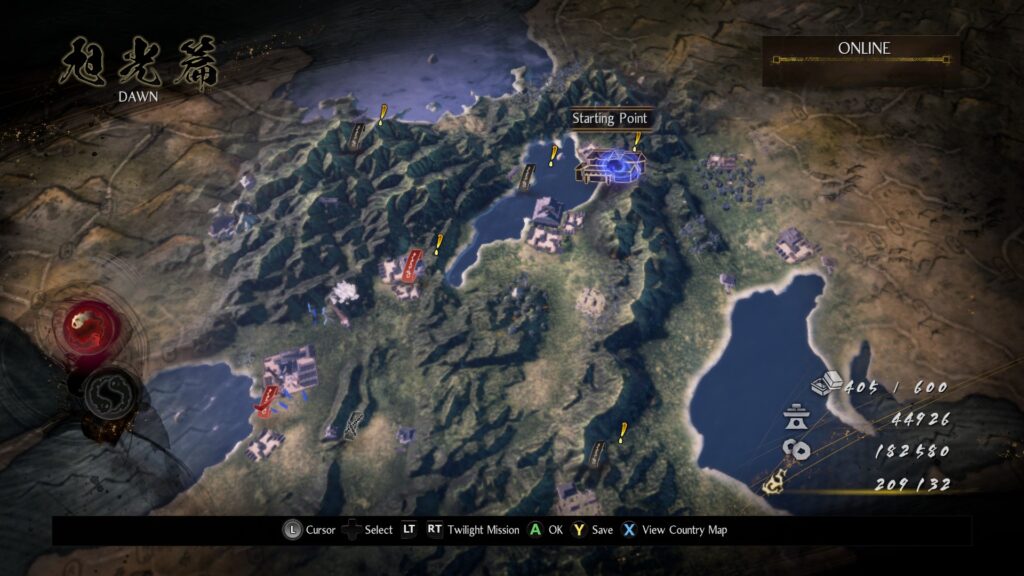
Shrines and Kodama
During missions, you save certain aspects of your progress by ‘praying’ at shrines located throughout the level. Many things will be retained by saving, for example: weapons, armour, gold and soul cores (souls of Yokai you kill). Whilst the amount of amrita you collect (a substance that allows you to upgrade your character, obtained mostly by killing enemies) will be saved if you quit the game after praying at a shrine, doing this cannot prevent you from losing it through dying.
Dying is a little more complex than your average game. When you die you leave your guardian spirit where you were slain (or fell), if you manage to recover it you can recover any amrita you had collected. If you die again before you reach it, all that hard-earned amrita disappears.
Shrines are more useful than just as a save point. They are also places to offer items to the Kodama (little green spirit beings) who inhabit the shrine in exchange for divine rice, amrita and sometimes extra gifts (if they’re feeling kind). You use divine rice to purchase things like elixirs (health), arrows and rifle bullets. It is also here that you can upgrade your character and manage your soul cores and guardian spirits. Being able to access this feature both during a mission and on the map screen was certainly a plus for me. I often found myself needing to change my set-up part way through a level.
Throughout missions, you will see Kodama at locations away from shrines. If you guide all of the Kodama in an area back to the shrine, you receive a reward in the form of Elixirs – your basic stock amount increases. A nice little bonus for the eagle-eyed gamer.
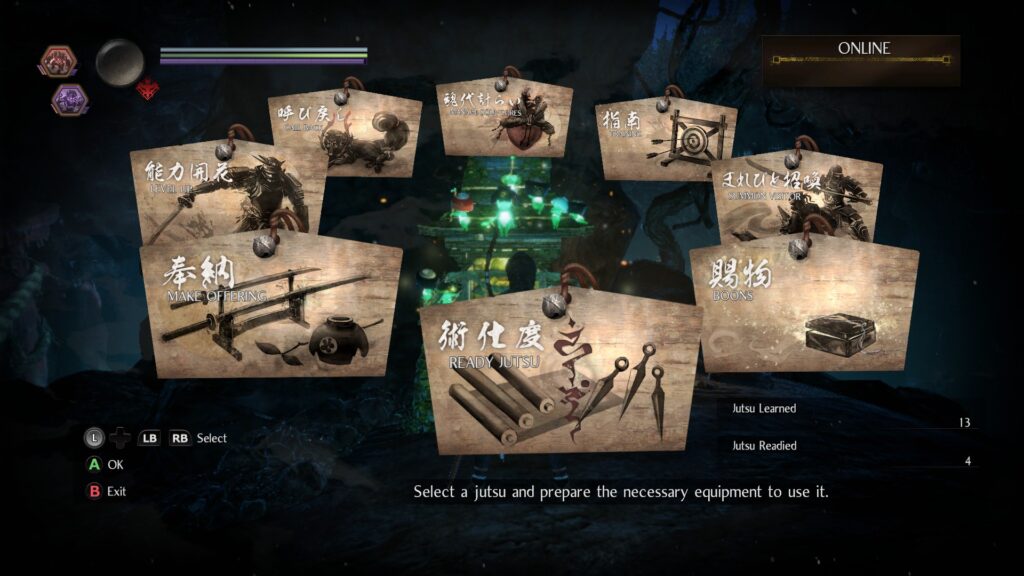
Keep Your Eyes on the Bar(s)
As well as a life bar, you have a ki bar (green) and an anima bar (purple) in the top left corner of the screen. I would argue that ki management is key to a successful experience with Nioh 2. Without it, you cannot run or fight, and despite blocking you will still incur damage to your life bar. However, you can make sure that it replenishes quickly by performing a ki pulse at the end of each attack.
As you land successful blows with your weapon of choice, you will see the anima bar increase. This is important as without it you will be unable to use all of your Yokai abilities. These include performing a burst counter and using the abilities of soul cores attuned to your guardian spirit. The burst counter is an action that blocks an oncoming attack from an enemy. A red aura briefly surrounds the enemy when it’s time to use it and you must time the block correctly for it to be successful.
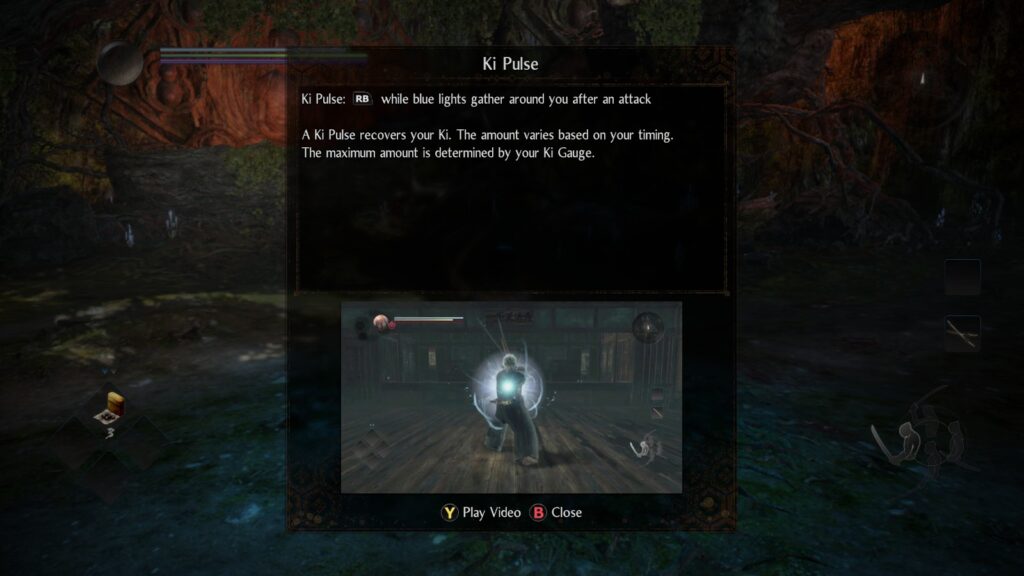
In addition to building up your anima bar, successful attacks will build up a meter on your guardian spirit emblem (in the top left corner). Once this fills up, you’ll see flames pictured surrounding the emblem. This means that you can go full Yokai and unleash the power of your demon side on enemies that get in your path. Attacks in this mode deal more damage but it only lasts for a short period of time, so it’s best to use it wisely.
In the beginning, it was a challenge to balance keeping an eye on all of these bars and the enemy in front of me. However, once used to this style of fighting, I enjoyed it. At times it felt close to real combat.
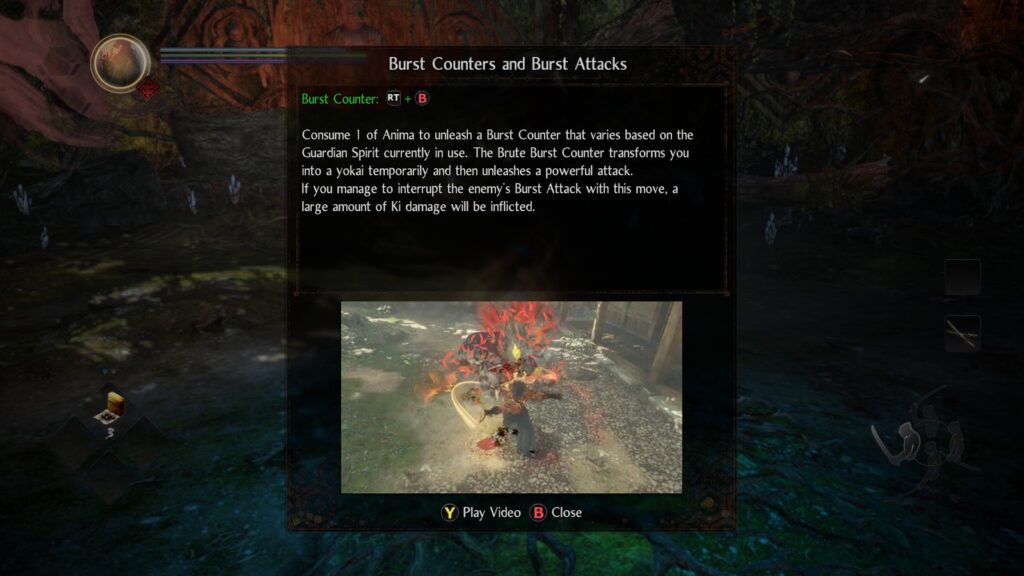
Secondary Weapons, Ninjutsu and Onmyo Magic
As well as having a main weapon equipped (there are many to choose from, e.g., swords, odachi, spears, axes etc.) you can equip a secondary weapon, a bow and a firearm (when they become available). In addition, once you unlock the ability to perform ninjutsu and onmyo magic, you can arm yourself with the fruits of these skills using shortcut buttons. If using the controller, this means using the D-pad. There are eight shortcut slots to use in total – you can switch between two D-pad menus using RB and left or right on the D-pad.
As you progress through missions, it quickly becomes apparent that the same weapons and techniques will not work on all enemies. Indeed, you also learn that it’s not all about reducing an enemy’s life bar but that reducing ki is also important. This heavily influences weapon and shortcut item choices. I thoroughly enjoyed this strategizing element to the game. It stopped gameplay from getting stale in such a long campaign and it turned battling bosses and passing through different regions into wonderful puzzles.
Trusty weapons that had served me for a few missions would suddenly have no use and I would be forced to try out a new weapon type. I appreciated the way that my need for certain weapon attributes (e.g., elemental damage such as fire, water etc.) meant that I had to try weapons that I would have otherwise not touched. It encouraged me to be bolder with not only my weapon choices, but armour, ninjutsu and onmyo magic.
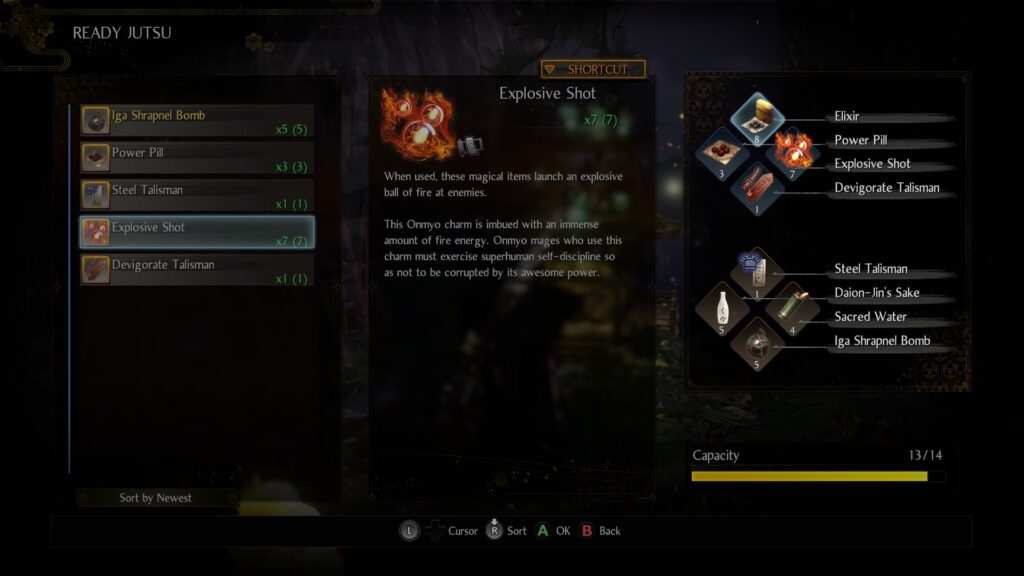
Guardian Spirits and Soul Cores
Your character in Nioh 2 – The Complete Edition has a guardian spirit which gives them certain Yokai abilities (each guardian spirit has its own advantages). Later in the game you are able to equip two at once. There are three types: brute, feral and phantom. The timing for the burst counter seemed different with all of them. I tried out all three types and settled on brute guardian spirits for my primary spirit, since they suited my fighting style best. I think the variety available here offers a good choice for many types of player.
When you kill a Yokai they will sometimes drop a soul core, you can attune these (two in the beginning, three later) to your guardian spirit to take advantage of that particular Yokai’s attacks. In addition, you can upgrade soul cores by fusing them together. Sometimes you lose qualities from one soul core, so you have to think carefully about what you need from fusion. The abilities the soul cores give you can be used without going full Yokai. They are also dependent on your anima bar. It’s easy to use them, on an Xbox style controller simply press RT and either A, X, or Y. When you get into your fighting flow, using this feature is the icing on the cake.
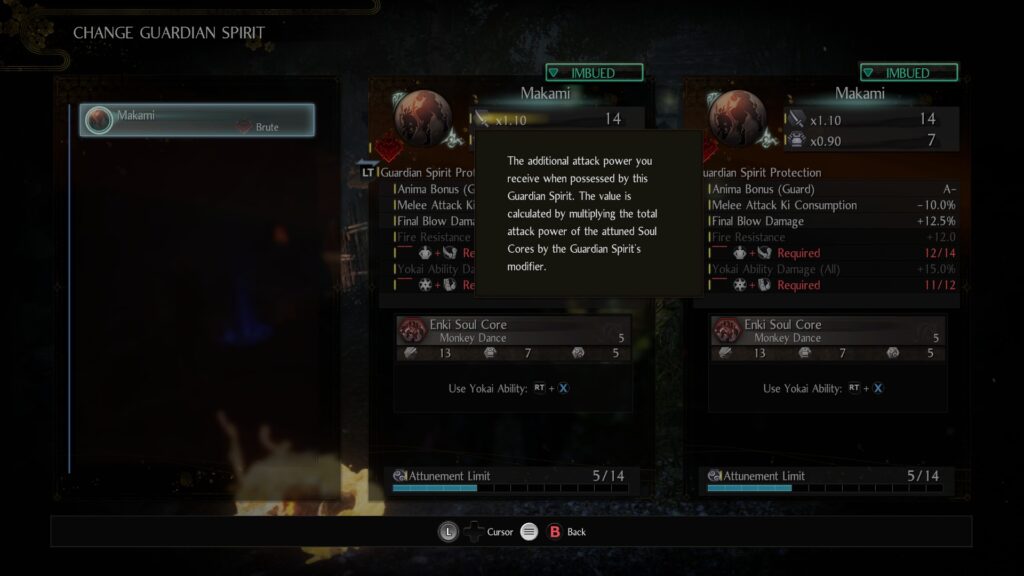
Graves
There are three types of graves in Nioh 2 – The Complete Edition: your own (when you die), blue benevolent graves and red revenant graves. If you do not pick up your grave before dying again, you lose all gained amrita. Players can place benevolent graves and earn rewards if they are used. If you fancy a bit of assistance, you can use ochoko cups (purchasable with divine rice) to summon help from one of these. Unlike NPCs who join forces with you, these characters do die. They can provide quite a good distraction while you learn a boss’ moves though.
The last type of grave is formed when you are struck down, although you can’t see your own revenant graves. You can choose to fight these angry warriors to earn glory, weapons and other rewards such as ochoko cups. Sometimes these graves activate of their own accord in the dark realm (the realm of the Yokai). Other than the rewards you could get from them, I don’t think they served any other purpose. I fought a few here and there but found that the enemies in missions dropped sufficient equipment to keep me well outfitted.
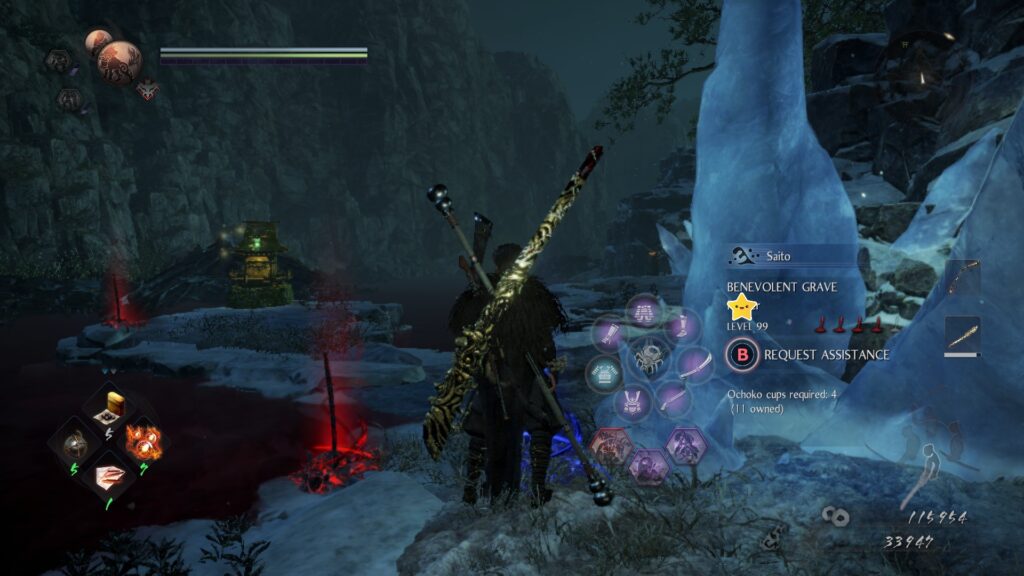
The Forge, The Hidden Tea Rooms and the Dojo
The Dojo provides tutorials. In the beginning, these are quite basic, although I would advise any newbies to the genre (like me) to go through them. Completing certain missions gives access to more dojo missions. The purpose of completing these is to gain access to the outer reaches of the skill trees – this is where you spend upgrade points you earn by using weapons. It was worth doing the dojo missions for the ability to upgrade and also to gain mystic art (superior abilities) for my weapons of choice.
Progressing through missions also unlocks the Forge and the Hidden Tea Rooms. The Forge is where you can create and upgrade weapons and armour and fashion certain items using forging materials. The Hidden Tea Rooms allow you to trade glory for yet more items, to join a clan and to have tea sets appraised. I did not fully understand the purpose of having tea sets appraised, but I dutifully collected and displayed them nonetheless.
I also wasn’t quite clear on the intricacies of joining a clan. As far as I could tell, the glory you earned went towards your chosen clan’s total and this seemed to decide which clan won or lost. This wasn’t an integral part of the game for me. I used the Hidden Tea Shop primarily to trade glory for items. Occasionally, I stared in bemusement at my clan information.
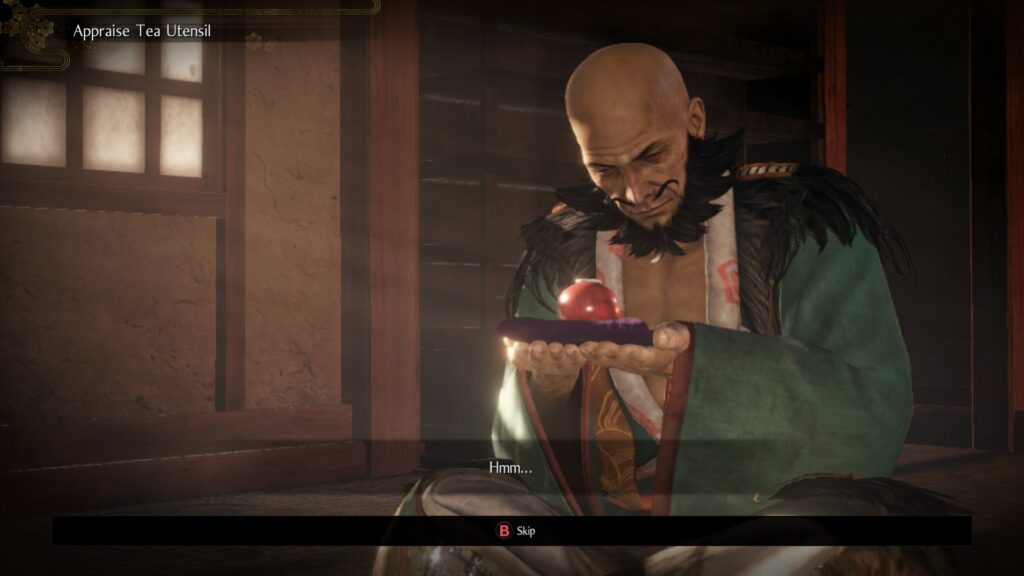
The Tech Stuff
As I began my Nioh 2 (– The Complete Edition) adventure, I had some issues with sound. That is, there wasn’t any. I did manage to find a fix quite quickly but to KOEMI TECMO GAMES’ credit, they released a patch swiftly addressing this issue. Other than this, I encountered no performance problems during over two hundred hours of playing time. In later main missions, I received an error message saying ‘Failed to write to Character 1 Save File’ when I prayed (saved my game) at a shrine. However, I did not lose any progress – perhaps because I prayed (saved) again immediately at the shrine.
I played on a gaming laptop with specs that meet most of the recommended system requirements. My graphics card being the only element below recommended (still exceeding minimum requirements). It is a game that demands a lot from your computer and when I had been playing for a few hours (particularly for boss fights in warmer weather) it sent the fans working hard. So, if you’re considering playing this game on PC with minimum requirements, I’d bear this in mind.
The last thing to mention here is that Nioh 2 – The Complete Edition offers partial controller support according to Steam. Despite saying ‘partial support’, I managed to complete my entire playthrough using only a controller and without issue. If you decide to play with a controller, I would recommend investing in a decent one as any delay in recognising your input choice could cost you dearly.
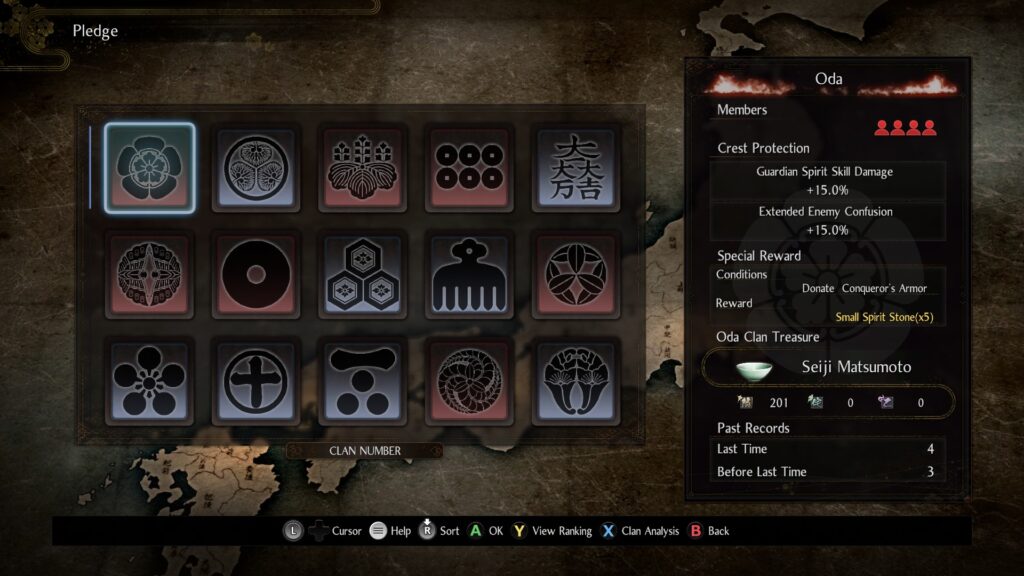
Camera Angles and NPCs
At times I found the camera angles frustrating. In boss fights and lower stakes encounters alike, sometimes I would suddenly find myself staring at a super close-up of an arm or the floor instead of my character. This often happened when backed into a corner or against an object. When locked-on to an enemy there is only so much voluntary movement available with regards to camera angles. Therefore, when this happened it was not as easy as simply tapping the directional stick to change the camera angle. Perhaps in the same way that sometimes walls etc. become translucent, this could also have been done to allow you to see where your character is in a tight spot. Then again, maybe this was an intended part of the difficulty level?
As a general rule, the NPCs (non-player characters) were helpful on missions when you joined forces with them. There was only one who I found to be a hindrance. She, who shall remain unnamed (so that you can discover the pleasure for yourself), ran off starting fights she couldn’t finish when it would have been more prudent to slip past certain enemies. I might have sworn at her, once or twice.
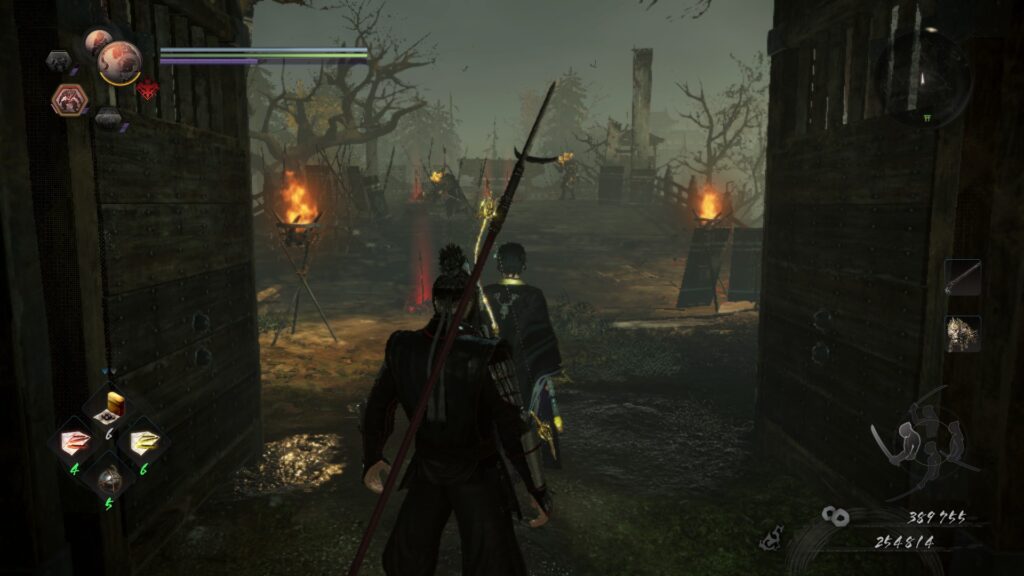
Visuals and Soundtrack
I am not the kind of gamer who obsesses over graphics. I’m more interested in how the overall experience makes me feel. As a package, the soundtrack and visuals complement each other well. Like most things in Nioh 2 – The Complete Edition, attention has been paid to detail. In each chapter, the music on the map changes; becoming ever more intense as you reach the final stages of the game. During missions there is often a soft background melody (sometimes more intense than others) but it never gets in the way of sound effects from combat.
Graphics are better in cutscenes, as you’d expect. With a better graphics card than mine, I’m sure the mission graphics would look more refined. However, I didn’t feel that they were ever poor or that they detracted from my experience. Especially whilst wearing headphones, I felt fully immersed in the Nioh-verse – often so much so that when an unexpected enemy popped up, I shouted out!
Nioh 2 – The Complete Edition offers a variety of mission environments throughout the game. You move through forests, tall grasses, icy lands, underground caverns, treacherous fire-ridden landscapes and breath-taking clifftop climbs. Even at a graphic card disadvantage, the scenery blew me away. I felt real fear as my character finished an attack combo inches from the edge of a precipice. I felt a chill creep over me when surrounded by towering blocks of ice and heat rise in my face when surrounded by burning buildings. The developers managed to convey the ambience of each environment perfectly.
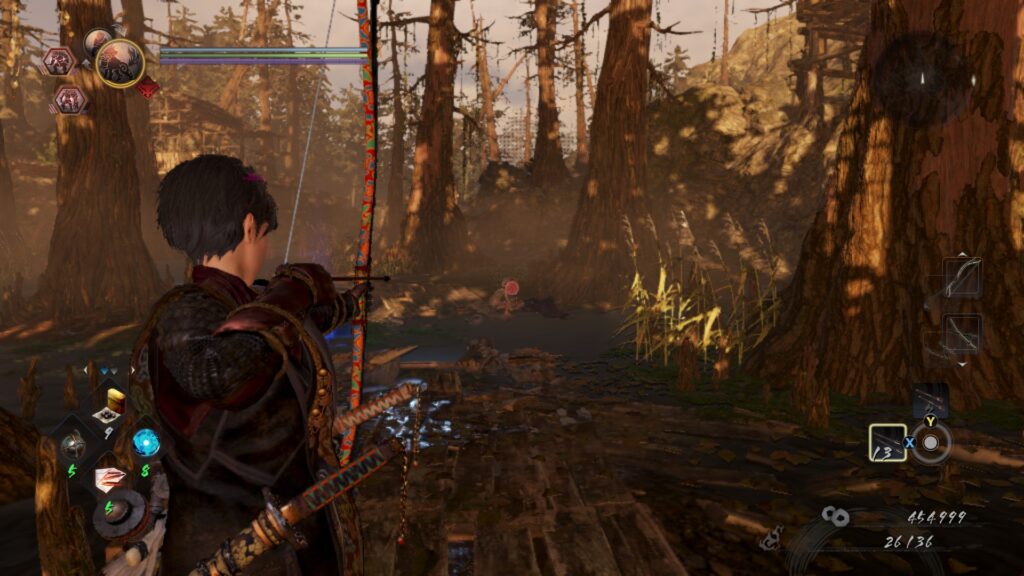
Replayability
Once you complete the main campaign, do not despair! There’s more. You unlock several more missions to play and another difficulty level for you to replay previously completed missions. At any point through the game, you can replay a previously completed mission for rewards or to find any Kodama that you missed. Or, just for fun.
As well as single-player, there are multi-player and co-op player modes for Nioh 2 – The Complete Edition. Unfortunately, I wasn’t able to take advantage of these modes but this certainly opens up the possibilities for further play.
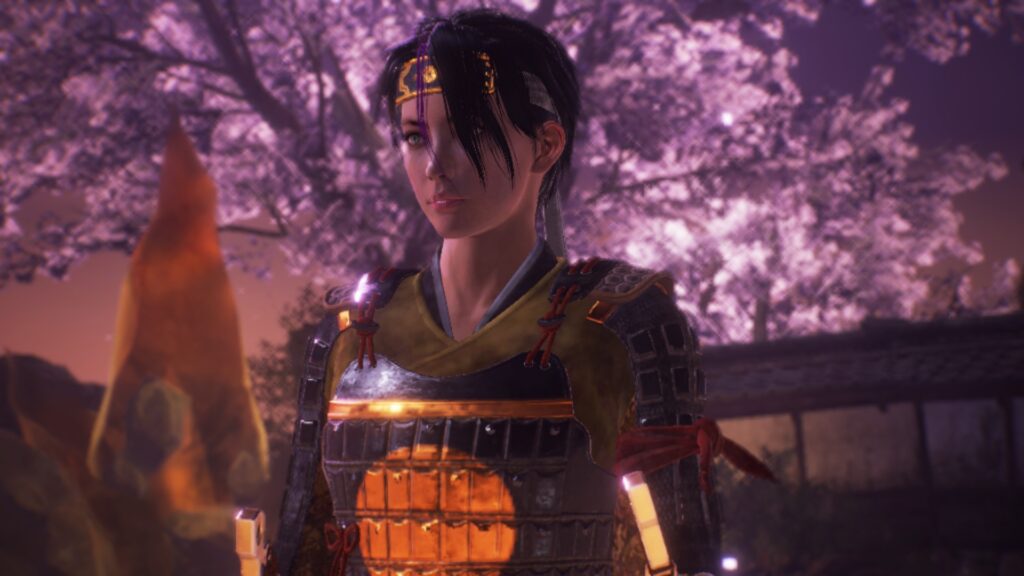
Is It for You?
Nioh 2 – The Complete Edition is not a game for the fickle or faint-hearted among us. It’s a commitment. You’re signing up to give over hours of your life to this title. It can be brutally unforgiving but the rewards of success, of careful planning and upgrading coming to fruition, can be glorious. I had no idea what to expect when I picked up this game to review but I am so glad that I did.
This is a game with such depth and complexity that I’m in awe of the development team that put it together. The level of intricacy is astounding, the story is compelling and the fighting mechanics are fantastic. There are umpteen tiny touches that make this such a great experience, from your character appearing in cutscenes exactly as you’ve kitted them out to fighting alongside NPCs who are key figures in Japanese history. There is so much to love. What are you waiting for?
Rapid Reviews Rating

4.5 out of 5
4.5
If you enjoyed reading this review, you may also enjoy reading our Ninja Gaiden Master Collection Review.

You can find and read our reviews on OpenCritic.



